Stelae
Stela 02
A SUN GOD DIVES INTO THE UNDERWORLD TO RENEW LIFE
Plaza A, South Center
The two people supplicating the sun god are lifted up from an underworld gourd tree.
This parallels the Popol Vuh creation story when the hero twins battle the underworld gods to restore life to the surface of the earth using regenerative powers of the gourd tree.
The tree has 9 gourds for 9 imox. This tzolkin date starts a 30-day lunar count to the winter solstice for scheduling ceremonies.
Archaeologist V. Garth Norman
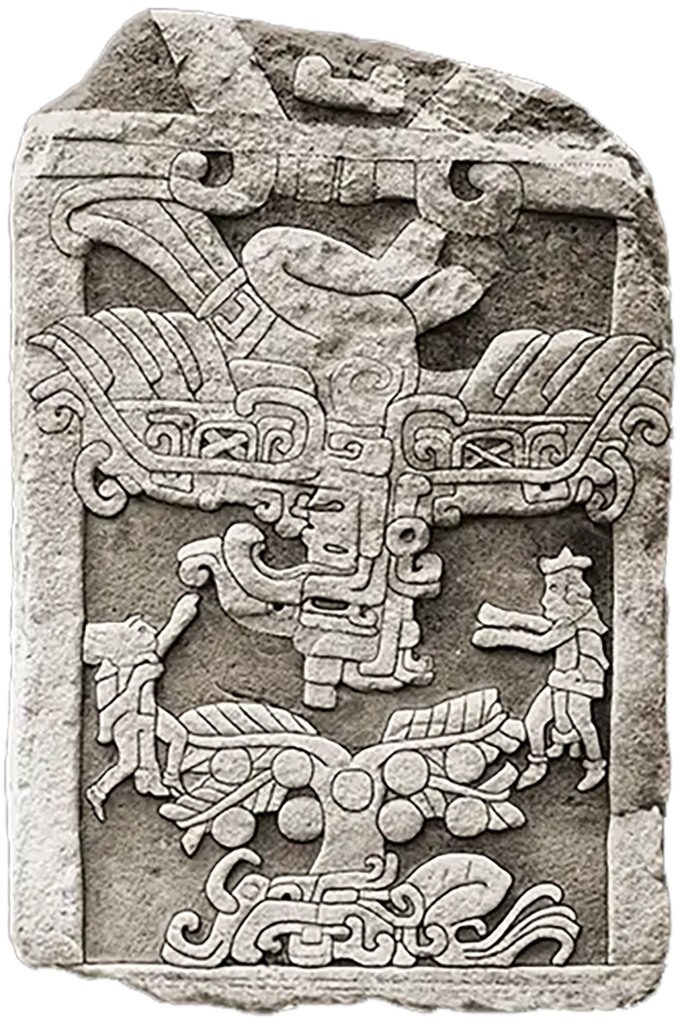
Stela 04
SUN GOD DESCENDS, ENDOWS IZAPA PRIEST-KING WHO IS IN THE IMAGE OF THE CONSTELLATION ORION
Plaza A, North
Aligned to venus on Tajumulco’s north peak and Orion’s pre-dawn passage. The Priest’s “Orion Stance” fits the Orion passage when one is standing by plaza A’s northern stela 4, facing south.
Archaeologist V. Garth Norman

Stela 05
THE TREE OF LIFE
Plaza A Northwest
“Izapa Stela 5 is the most detailed and important Tree of Life rendering in the ancient world.” – Mary Ellen Miller, Yale University
The rain cycle surrounding the scene symbolizes the human life cycle, and the ancestral tree represents humanity’s journey from its 12 tribal roots to its branches reaching the heavens. Marks on the tree correspond to the Maya Five World Ages that end on 4 Earthquake (2080 AD). The family seated beneath the tree correlates with the first ancestral family of the Maya Popol Vuh migration account.
On August 13 Stela 5 begins the 9-moon month count of the 260-Day Gestation Calendar. The cycle ends on April 30 when the spring rains grow food to nourish the newborn child.
Archaeologist V. Garth Norman
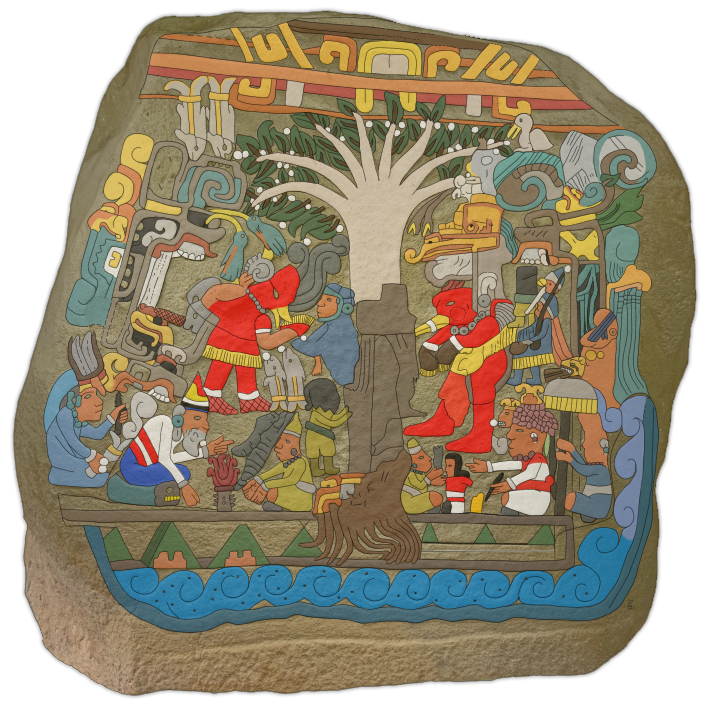
Stela 21
SPRING RENEWAL THROUGH EVIL RULER’S EXECUTION
Plaza D Southeast
An evil priest executioner wearing a jaguar-bat headdress beheads deposed noble.
Executioner’s knife is raised to Passover Date on the rain scrolls.
The spirit of the dead man is carried off to the western underworld in a sedan chair with a crouched jaguar guide on top. (Jaguar ties to Stela 25 crouched jaguar.
Archaeologist V. Garth Norman
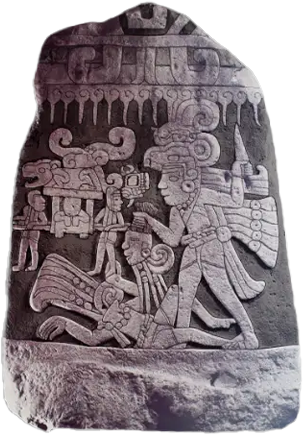
Stela 25
QUETZALCOATL’S SELF SACRIFICE AT THE TREE OF LIFE
Plaza A, North
The large bird perched on the serpent staff beside the Crocodile Tree of Life is Venus-Quetzalcoatl with a Venus glyph on its wing.
The priest raising the serpent staff with a serpent wraped around it has a severed arm, which is a symbol of sacrifice.
Compare to the Popol Vuh: severed arm of Hunapu by 7 Macaw.
Archaeologist V. Garth Norman
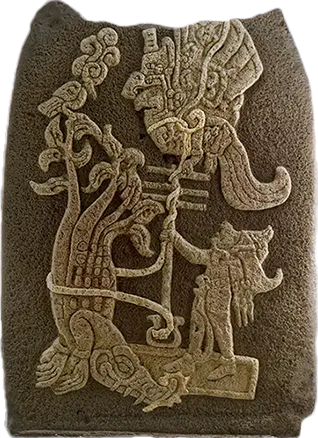
Stela 27
SPRING EQUINOX EMERGENCE
Plaza A, East
The Venus Sun God in the middle of the tree descends down on a journey into the underworld.
A young jaguar, holding a new sun from the underworld, accompanies a youth to the Spring Equinox emergence. The new sun is delievered to the God of the Tree of Life, representing resurrection of the Venus Sun God.
The 10 date (glyph weathered away) matches 10 Cauac, the date for the Spring Equinox emergence.
Archaeologist V. Garth Norman

Stela 09
A RESURRECTED SPIRIT ASCENDS TO HEAVEN IN THE LEFT ARM OF A SUN GOD
Plaza B, North Center
A winged Sun God carries a human spirit in his left arm to heaven as the sun rises on Summer Solstice, June 21st, the day the sun reaches its highest point in the northern heavens.
Archaeologist V. Garth Norman
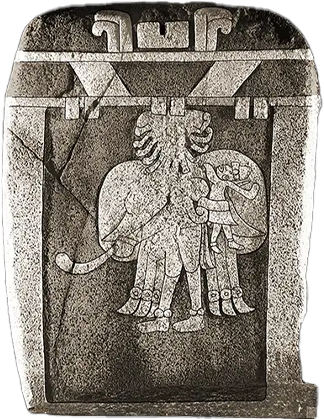
Stela 10
CHILDBIRTH AT END OF 260-DAY CYCLE ON APRIL 30TH
Plaza B, Northeast
Diagonal glyph in the top center square completes the 260-day sacred gestation calendar that started on August 13th with Stela 5.
A treasured spirit child, carried by its foot on a sun spirit’s wing, descends from the clouds and down the Tree of Life to its pregnant mother who will give birth under the Tree. Two spirits attend her. (See video of 260-Day Calendar)
Archaeologist V. Garth Norman
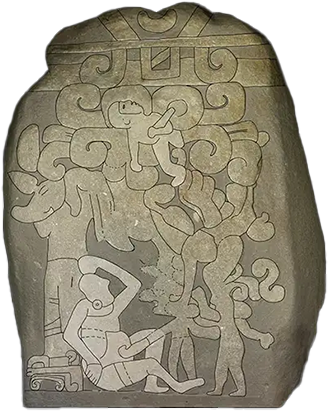
Stela 11
CYCLES TRANSITION
Plaza B West next to Stela 12
The Sun God descends into the mouth of the Earth Creature to end the day, year, and greater cycles.
This stela aligns with Pilar 1 and the September 21 sunrise for the Fall Equinox in celebration of Izapa’s New Year, which is the same time as the Hebrew New Year.
Archaeologist V. Garth Norman
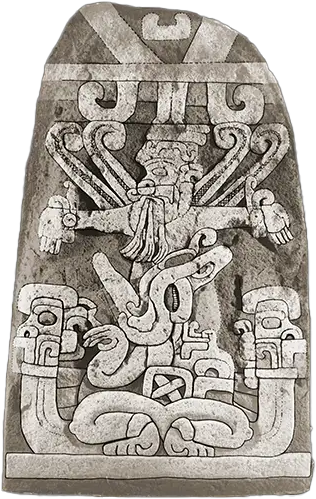
Stela 12
175 BC NEW FIRE COMMEMORATION
Plaza B West Center
The dead jaguar represents the earth aspect of the sun for cycle changes celebrated with sacrificial fires attended by the Izapa priests on behalf of worshippers. Orion triangle is under the fire.
This stela shows many dates from the Maya Calendar.
- Moon phases
- Solar Year
- 260-day calendar
- 52-year calendar round
- 20-day Uinal & 20-year Katun
- 400-year Baktun
- Venus 584-day Synodic cycle
Archaeologist V. Garth Norman
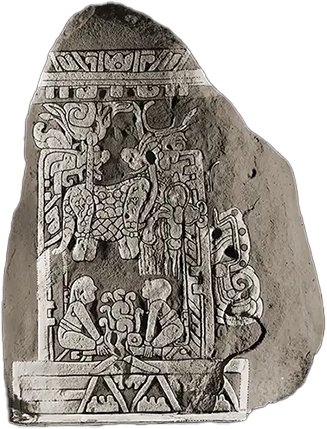
Stela 50
THE VENUS CYCLE &THE 260-DAY CALENDAR
Plaza B, West, South of Stela 12
The skeleton death of Venus as the Evening Star (note the Venus cross and bone on the skeleton’s head). The winged spirit rising on an umbilical cord is the rebirth of Venus as the Morning Star.
The Maya plotted this day count via the Venus evening star phase to its heliacal rise as the Morning Star representing resurrection.
Archaeologist V. Garth Norman
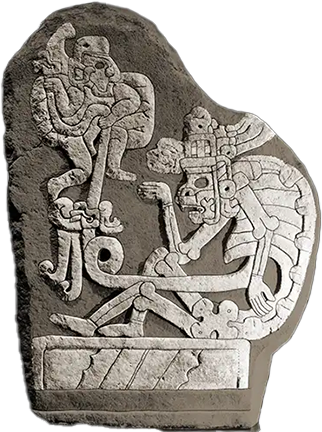
Stela 67
BEARDED FIRST ANCESTOR MIGRATION FROM ACROSS WESTERN SEA
Plaza F Ballcourt
Mesoamerican Chronicles reference to First Ancestors migrating from across the sea (Recinos: 1950, 1953).
Inverted water scrolls represent the migrants came across the western sea.
The fish swim towards the easterly destination.
The priest holds Scepters or Navigation Tools.
Inverted boat (Maya Sunrise Glyph) represents migrants leaving the boat upon arrival at the promised land.
Archaeologist V. Garth Norman

Stela 89
A MAN’S RESURRECTION JOURNEY FROM THE UNDERWORLD
Plaza B Southeast
A “man-spirit” is lifted up from his captive “bands of death” as he gazes toward the winter solstice sunrise.
His body is composed within a geometric model of the sun to express his journey with the sun toward humanity’s divine destiny.
Composed with increments of the 52.5 cm. codo, which is the Egyptian Cubit.
Archaeologist V. Garth Norman

